According to this question, it is possible to build instrumentation amplifier out of resistors and operational amplifiers. I am more interested in the version where the gain is set by changing Rgain resistance.

The goal here is to build INA125 or INA122 in-amp. Hence, a couple a questions:
- Which op-amps could I use in this circuit? Specifically, would LM124 or LM158 be appropriate? Would you recommend some others? Note that the circuit will be used in 5V low-power design at sub-zero temperatures.
- What drawbacks can I expect when using this substitute instead of INA125 or INA122?
- If this whole idea is silly, is there some other way to amplify the signal coming from a Wheatstone bridge?
Here's some extra information about my question. I am building a weight scale and I'm using four load cells connected in Wheatstone bridge. I get some 2.3 mV for 100 kg and need to amplify this to use with 8-bit Atmel AVR MCU. Unfortunately, where I live, suppliers do not have any kind of instrumentation amplifiers, so my only options are to try to build one or to wait 30+ days to be delivered from online sellers.